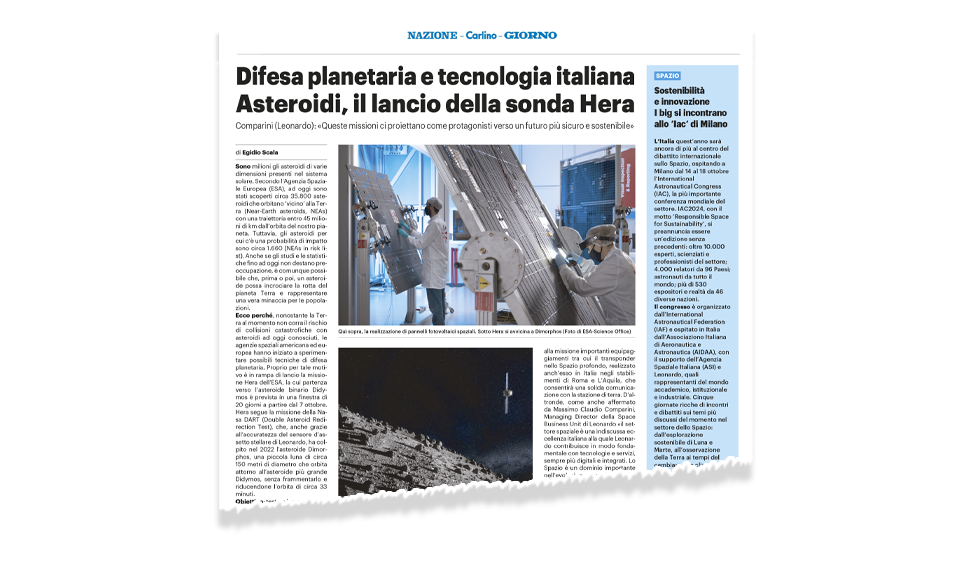According to ESA, about 35,800 asteroids orbiting “close” to Earth have been discovered to date. Although there is currently no risk of catastrophic collisions, the U.S. and European Space agencies have begun experimenting with possible planetary defence techniques. This is the aim of ESA's Hera mission, for which Leonardo built and tested photovoltaic panels, the probe's primary energy source, in Nerviano (Milan, Italy). Thales Alenia Space contributed by supplying important equipment, such as the deep space transponder, created in Rome and L'Aquila, which will enable solid communication with the ground station.
Hera follows NASA's DART (Double Asteroid Redirection Test) mission, which in 2022 hit the asteroid Dimorphos, a small moon about 160 metres in diameter orbiting the larger asteroid Didymos, without fragmenting it and reducing its orbit by about 33 minutes. This result was also possible thanks to the accuracy of Leonardo's star attitude sensor, a “compass” capable of calculating the probe's orientation in Space.
The article “Sustainability and innovation. The big players meet at ‘IAC’ in Milan” emphasises that Italy is at the centre of the international debate on Space. From 14-18 October, the International Astronautical Congress (IAC), the world's most important conference in the field, will take place. Besides the Hera mission, IAC 2024 will also focus on the sustainable exploration of the Moon and Mars, Earth observation, and the use of big data, artificial intelligence, and robotics in Space.


